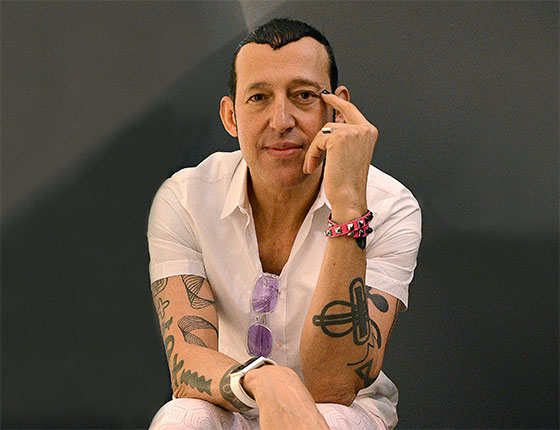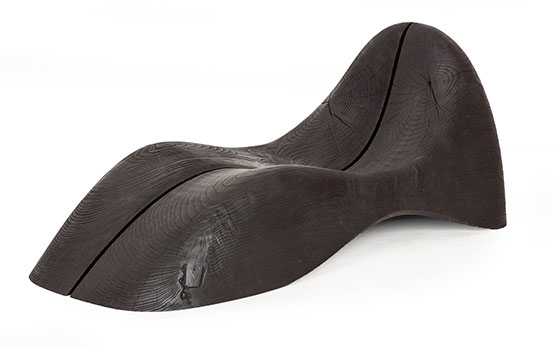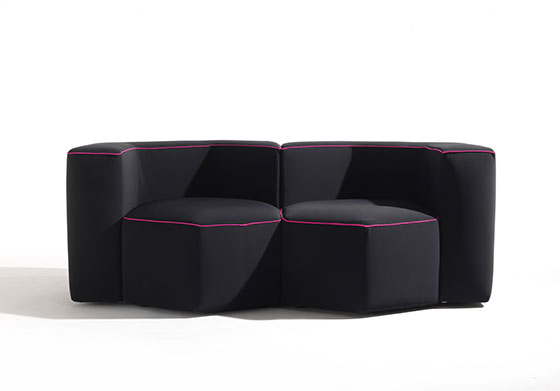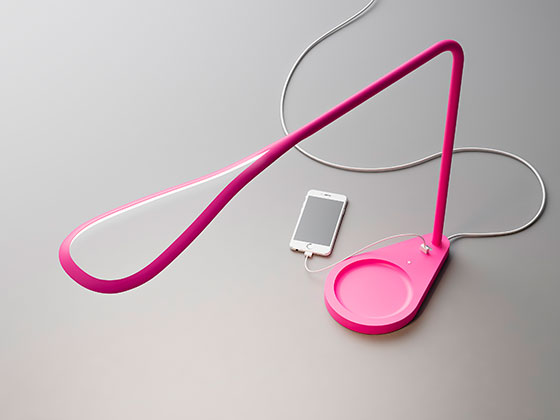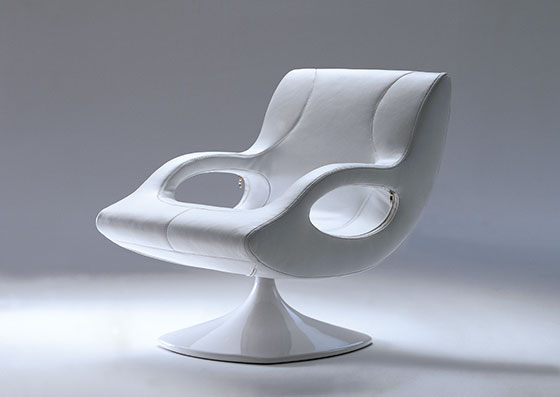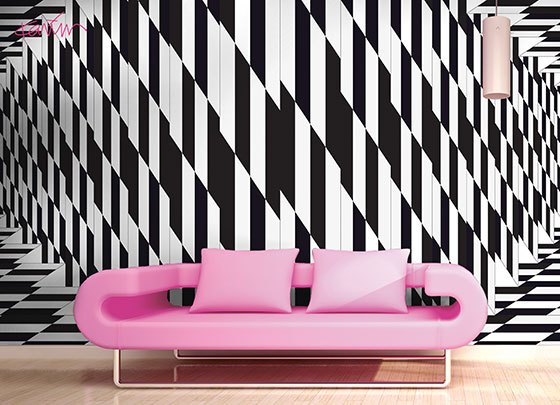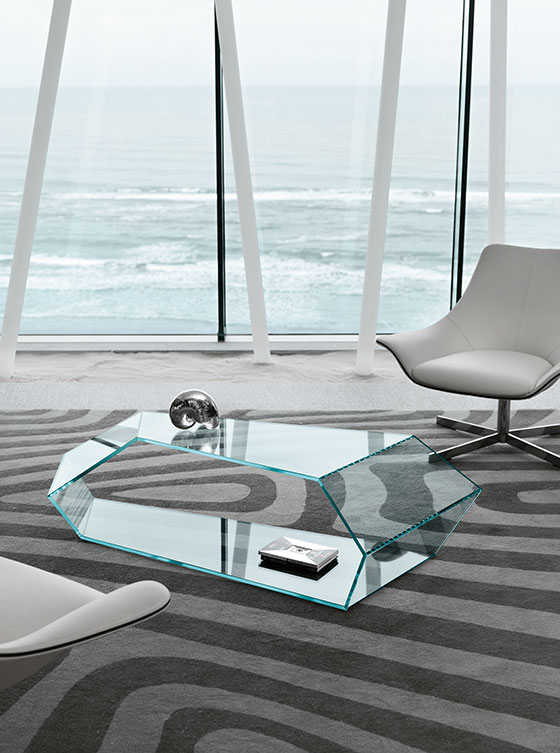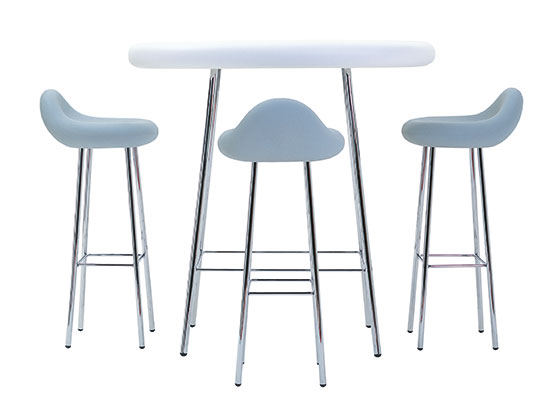Material Tendencies: Karim Rashid
Text by Anita Hackethal
Berlin, Germany
04.05.16
Whether it is a space, product, fashion item or an ornamentation, Karim Rashid’s work is very distinctive: an ultra-bright empire of colour and organic shapes.
Karim Rashid - Photo © Architonic / Anita Hackethal
The New York-based designer spoke to Architonic about his democratic choice of materials, giving us a small glimpse into his versatile world of interests.
Would you like to say a few words about the Chaise Longue for RIVA that you are presenting here in Milan?
The DUSK Chaise is a fluid, organic object, a bit like a sculpture, but I made sure that the shape is perfectly comfortable. RIVA’s tradition and the beauty of what they do is this kind of manipulation and sculpting of really massive chunks of this gorgeous and rich wood. The wood chunks bring a certain dimension, so I connected two pieces. I did not really want to have a seam joining the wood, so I just kept it as two separated pieces, to be more honest about it. I think the beauty about it is that it is so rudimentary. The special wood-burning process that the object was treated with causes these very exaggerated cracks and all the aging of the wood shows up black on black. It is quite elegant.
If you had to restrict yourself to working with just one material for the next three years, which one would you choose?
Karim Rashid: I work with every material. I have been working for 30 years now with glass, plastic, ceramics and different alloys. But if I am stuck with one material, I think I would either work with sugarcane-derived polypropylene, which does not rely on petroleum, or I would choose a biodegradable polymer.
Why these choices?
There are three criteria: one is sustainability and 100% choice for the environment. I prefer to work with recyclable and disposable materials. Second, it should be a very democratic, inexpensive material, so that I can make something for a massive audience. Plastic enables my designs to be more accessible on the market. And it is a material that has phenomenal properties. It is durable, malleable and it can actually be quite comfortable. Third criteria is the processing options. There are things you can do in polymer that you can never do in any other material. Also I think it would be really nice to do some experimentations with this kind of nano-driven liquid crystal polymer, but this material is not really out yet. It is a very technological product. It is almost like a skin that can fire up imagery – an ultra-nano-thin layer that could give energy, heat, cool down, change colour, etc. The only issue is that the cost is so exorbitant; it definitely is not a very democratic material at this point.
When doing a project, where you are free to decide, what do you consider first, the shape or the material?
You are never really free. If you are an artist, you are free to decide about the process and the choice of material; you do whatever you like. Design is more a kind of commercial art. Your hands are tied a bit with the criteria of the client. To be a good designer, you need to really understand the culture of the company you work for. You create something that suits the DNA of the company. At the end of the day, design is quite collaborative in that respect. It is about putting together the company’s expertise, its heritage, its history, its market and yourself. I try to always have some nuance of originality in my work, whether it is a new material, a new production method, a new form, a new message or opportunity.
